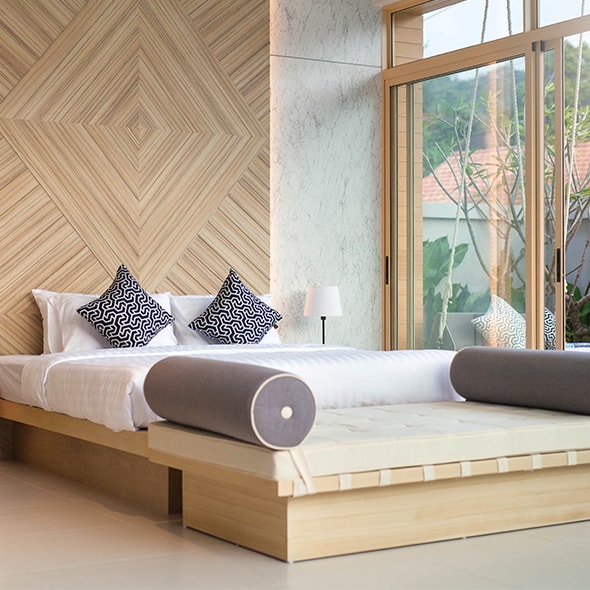Are you curious about the future of sustainable building materials? Well, WPC boards are fast emerging as versatile, eco-friendly alternatives to traditional wood and plastic materials. With continued innovation in the industry, WPC board manufacturers are fashioning new trends and technologies to fit the growing demand for sustainable construction solutions. This paper will shed some light on various upcoming trends and innovations shaping the future of WPC boards.
Advanced Manufacturing Techniques
One of the most promising trends for WPC boards is advancements in manufacturing techniques. WPC board manufacturers use cutting-edge technology in producing boards that exhibit improved durability and great aesthetic appeal.
Advanced extrusion processes will be in a better position to manage composition and quality, hence coming out with better strengths against moisture, UV radiation, temperature changes, etc. That means WPC boards will keep up their integrity of structure and look for a longer period, making them excellent for indoor and outdoor use.
Sustainable practices
WPC board manufacturers are rapidly moving towards greener times by practicing sustainability to lessen their ecological footprint given the growing concerns about the environment. The percentage of reutilized material used while making WPC boards is increasing day by day, which decreases the consumption of virgin resources and minimizes waste generation.
At the same time, improvements in the manufacturing process have resulted in the production of boards that can easily be recycled at the end of the product life cycle. Such commitment to sustainability does not only help the environment but also provides a selling point to consumers seeking eco-friendly building materials.
More Aesthetic Choices
- Natural Wood Appearance: The key among the innovations in WPC boards is to resemble the look of natural wood. With advanced printing and texturing techniques, manufacturers can produce boards that very nearly imitate the grain patterns and colors of a variety of wood species. That makes WPC boards quite attractive for applications where the appearance of natural wood is desired.
- Color Variety: Apart from the natural wood finish, WPC boards are available in a wide color range, thus offering more options to designers. This allows architects and designers to work out particular and attractive spaces.
- Custom Textures: Some manufacturers are also working on custom textures to provide a better feel. These textures increase the aesthetic value of the WPC boards and give a touch of class to any project.
Better Performance Characteristics
WPC boards’ performance characteristics are constantly being improved to suit the demands of different applications. Innovations in material composition and manufacturing processes gave way to boards having strength, flexibility, and resistance to common issues such as cracking, splintering, and warping.
Hence, WPC boards would suit uses ranging from decking and fencing to furniture and interior cladding. The improved performance characteristics ensure that WPC boards retain the ability to be an excellent, rugged solution for residential and commercial projects alike.
Integration with smart technology
- Smart Sensors: As smart technology integrates into building materials, WPC board manufacturers will do the same. Smart WPC boards with embedded sensors will be able to provide real-time data on their structural integrity, moisture levels, and other environmental conditions for monitoring the performance to ensure the boards’ longevity.
- Improved Performance: The embedding of smart technology within WPC boards adds value to their functionality, providing the consumer with insight into the conditions and maintenance needs of the installation.
- Future Promise: Smart WPC Boards are a giant step forward, just as they might change the way we will use and care for building materials to make them more intelligent and more responsive to changing conditions.
New Markets Applications
The versatility of WPC boards is such that they have started paving their way into adoption in new and niche markets. Although already suitable for traditional applications like decking and fencing, WPC boards are finding very interesting and practical uses in fields like automotive, marine, and industrial design.
It’s their light weight, coupled with resilience and strength, that enables them to be used where other materials can’t. This expansion into new markets only proves that WPC boards have enormous potential for revolutionizing a wide array of industries by bringing in a more sustainable and high-performance alternative.
Conclusion
The future of WPC boards will continue to shine bright due to continuous innovations and emerging trends. WPC board manufacturers are embracing advanced manufacturing techniques, sustainable practices, and smart technology integration to come up with products that best fit the changing consumer needs.
The improved aesthetic options and better performance characteristics make WPC boards versatile and very alluring, finding huge applications in various uses. As the industry continues to grow in leaps and bounds, WPC boards are doubtless going to be one of the major players that will reshape a much more sustainable future in building and design.
Coupled with all these new trends and innovations, the WPC board manufacturers are upgrading their products, and a lot is being contributed toward making built environments more sustainable and eco-friendly.



